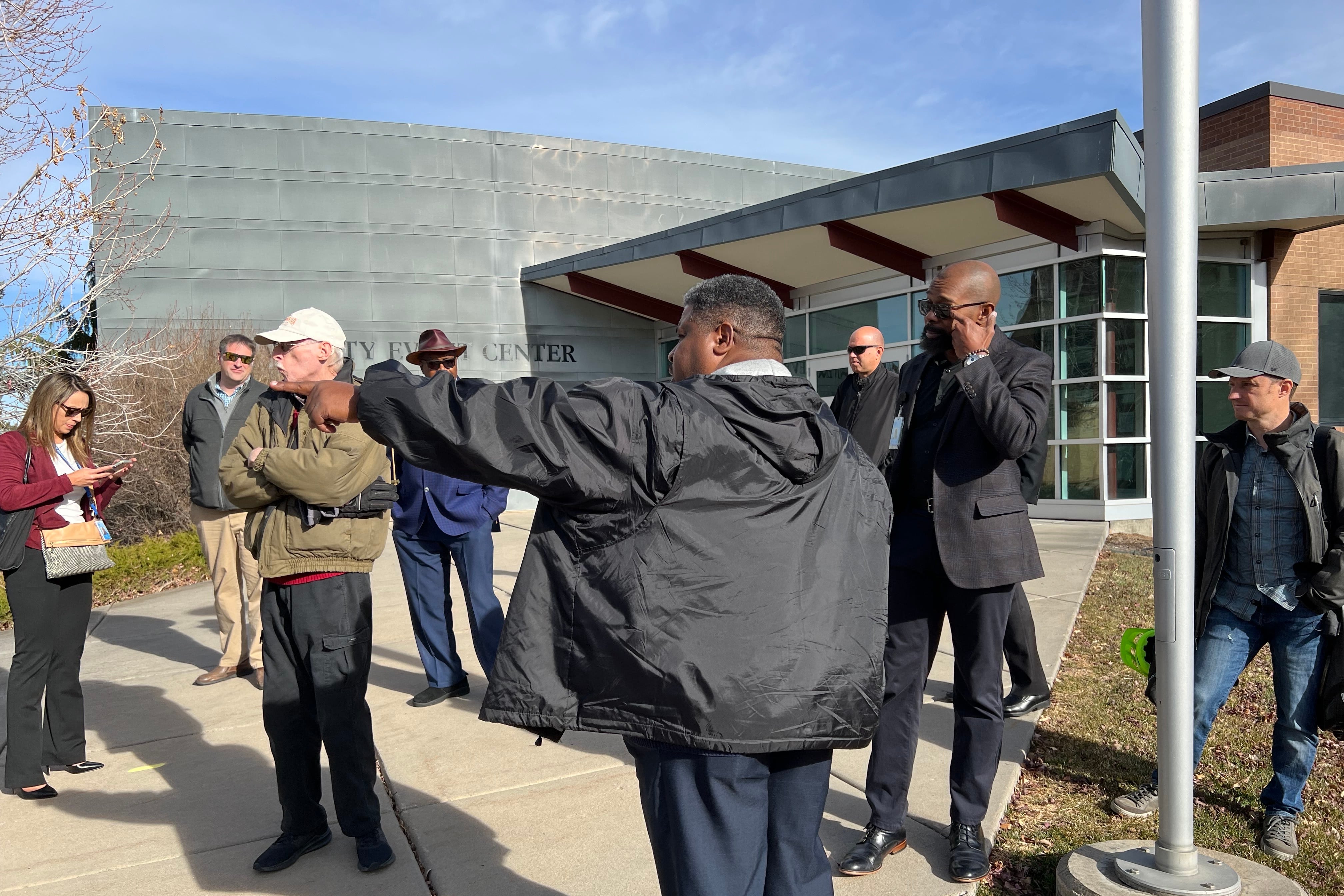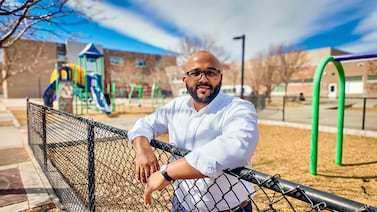Principal Anthony McWright stood outside Whatley Chapel, one of four buildings the Denver district purchased last year to expand the prestigious Denver School of the Arts, and gestured to an outdoor amphitheater that can seat 1,200 on its worn wooden benches.
“Out here, you could do Shakespeare in the park,” he said to a dozen people standing with him in the Monday morning sun. “You could have families watching movies.”
McWright was leading a tour of the former Johnson & Wales college campus across the street from DSA. He was also pitching his vision that DSA, whose students are whiter and wealthier than the district average, would become more diverse through the expansion and a new exploratory track for students who love to dance or draw but don’t have the prowess (or the money to afford private lessons) it takes to get into DSA, which rejects 500 applicants per year.
“This is about getting every child who wants the arts and has a love for the arts access to a program like this,” McWright said of DSA, which serves grades six through 12 and draws students from across the metro area and even out of state.
Denver Public Schools bought part of the now-closed Johnson & Wales campus last year for $30 million and set aside another $10 million to renovate it. But increasing construction costs mean DSA needs another $6.6 million to complete phase one of the renovations.
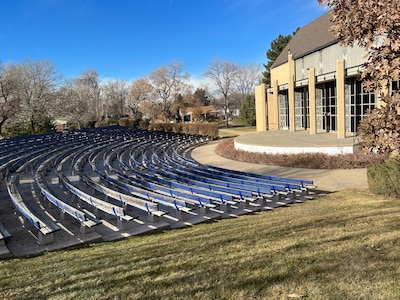
The Denver school board will be asked to approve the expense later this month. Four of the seven board members listened to McWright’s pitch Monday, and two — Scott Baldermann and Scott Esserman — stayed for the tour. At a meeting of the board’s finance committee later that day, Baldermann expressed reservations about the project.
He questioned whether the district should expand a school when district enrollment is declining. The board recently rejected a plan to close low-enrolled schools.
“If we’re going to go down a path of not consolidating schools but we’re also adding seats to the district, it doesn’t add up to me,” Baldermann said.
Esserman said the board needs to consider the flip side, too. He called the Johnson & Wales purchase a “short-sighted” decision by a previous board, which included Baldermann.
“They didn’t take this into consideration when they made that initial investment,” Esserman said of the board members, “and now we’ve got $30 million invested in a property that if we don’t move forward with sure feels like an albatross around our neck.”
Update: At a meeting Dec. 15, the school board unanimously approved the additional $6.6 million in funding for Denver School of the Arts.
DSA has a plan to increase diversity
DSA is unique among Denver’s more than 200 public schools.
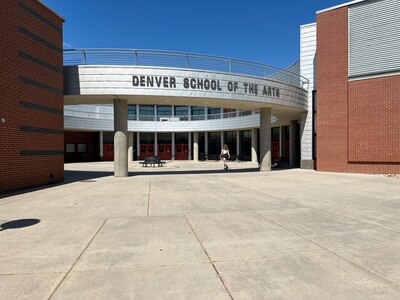
It’s one of only two schools that requires an audition to get in, and its audition is by far the most rigorous. DSA is also wildly popular and has been over capacity since 2003, McWright said. The school currently has about 420 middle schoolers and about 690 high schoolers.
Though Denver Public Schools as a whole is only about 25% white, DSA is nearly 70% white. Most students come from middle- and high-income families.
About a third of DSA students are from outside Denver. McWright talked about families driving 65 miles from Fort Collins every day or renting their children apartments near the school.
McWright said that when he took the principal job a few years ago, his goal was to diversify DSA. He wants it to grow from 1,100 students to 1,700 by adding 175 middle schoolers and 425 high schoolers. The percentage of students qualifying for subsidized meals, an indicator of poverty, would grow from between 10% and 13% to as high as 30%.
Each student at DSA chooses an arts focus ranging from creative writing to orchestra to theater. The school would keep those programs but add an exploratory track for students who are still developing their skills. All students would take academic courses together, but their arts classes would be differentiated by ability level, McWright said.
The plan is ambitious, and McWright admitted there are hurdles. He said some families of color are hesitant to send their children to DSA for fear they’d be teased or made to feel they don’t belong. Separately, some families have said DSA isn’t welcoming to students with disabilities.
McWright said he’s also heard from current DSA families who are worried that adding an exploratory track would water down DSA’s prestigious programming.
“This is not about bringing DSA down,” McWright said.
“This is access for any student who has a love of the arts. If they have the passion, the will, and the drive, they deserve to sit in these chairs.”
How DSA would spend $16.6 million
The $16.6 million for the first phase of renovations on the former Johnson & Wales campus would come from bond premium, which is revenue the district makes when its bonds sell for a higher price. The initial $30 million for the purchase came from bond premium as well.
Also on the tour Monday were community members who serve on a committee that tracks spending of a $795 million bond approved by voters in 2020. The committee makes recommendations, not decisions, but its members are also divided on funding DSA.
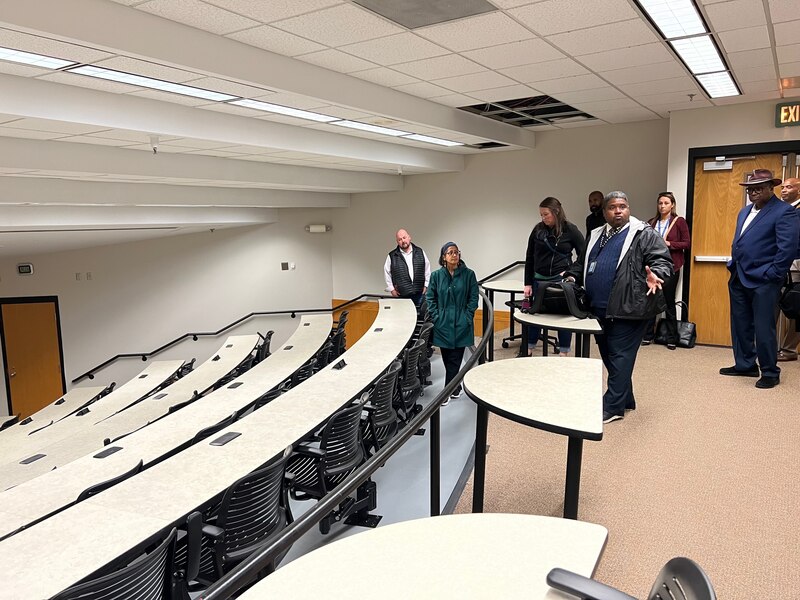
“This is a very large chunk of money for a school that is fairly functional as it is,” Christopher Wink, co-chair of the committee, said at a meeting Monday afternoon. “Is it exciting? Yes. Are there other schools that could use some of these funds? Absolutely.”
A bulk of the $16.6 million would be spent to bring the Johnson & Wales buildings up to code, which is different for K-12 than it is for colleges, district officials said. That work would include projects such as updating the HVAC and security systems and modifying the elevator.
Some of the money would also be used to add walls to a large empty library to transform it into eight classrooms, according to district documents.
If the board approves the funding, the work would begin in February and take about a year, district officials said. Once it’s completed in 2024, DSA’s 11th and 12th graders would move into the renovated buildings, freeing up space in the original school across the street.
Phases two and three of the construction would involve renovating spaces for the dance, theater, and visual arts programs, as well as creating more classroom spaces, McWright said. Those phases don’t yet have timelines or cost estimates, he said, though DSA is hoping to raise some of that money from private donors, a process that’s already begun.
On the tour, McWright pointed out how offices could become science labs, and lecture halls could transform into band and orchestra rooms. Leveling off the altar in a chapel with stained glass windows could turn the historic building into a performance space.
Other spaces would need minimal renovations aside from new paint, he said. The main building already has a nurse’s station, counseling offices, and a student center with comfy furniture that DSA could turn into a library by adding shelves and books. The building also has an industrial kitchen that the district is already using to make meals for other schools.
Eventually, all high school students would learn on the former Johnson & Wales campus, McWright said. Middle schoolers would remain in the current DSA building.
A slide McWright presented contained a warning in red letters: Though DSA is already trying to diversify its student body by increasing outreach and removing barriers to auditioning, those tweaks “will yield minimum impact until the two campuses are completely separated.”
Melanie Asmar is a senior reporter for Chalkbeat Colorado, covering Denver Public Schools. Contact Melanie at masmar@chalkbeat.org.

